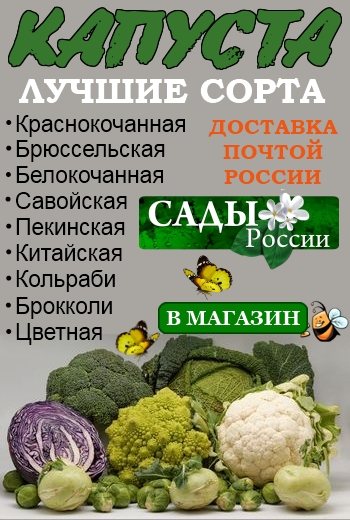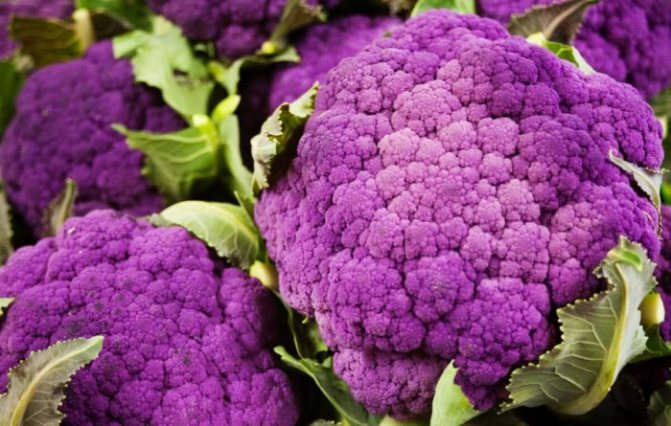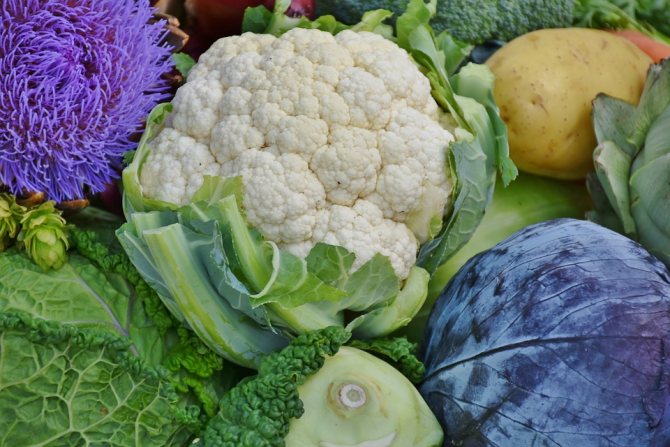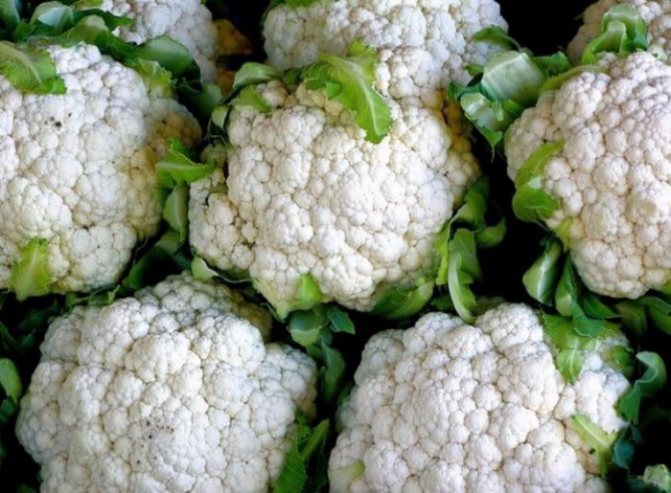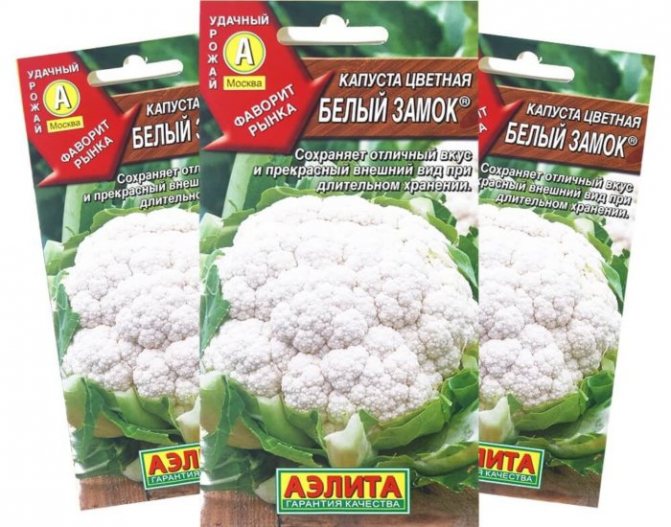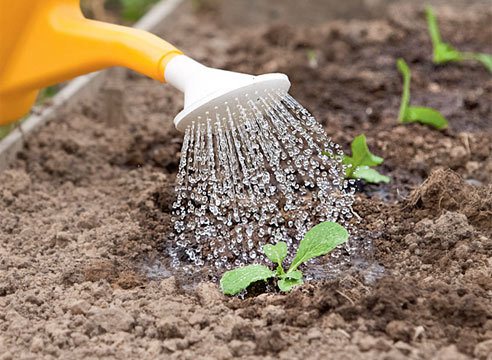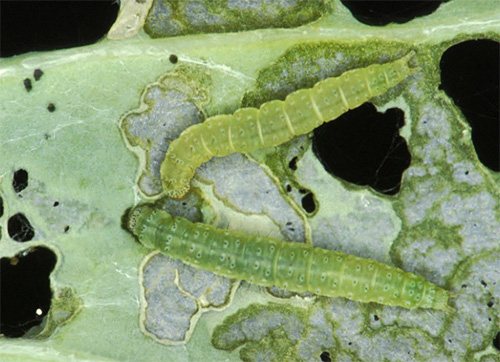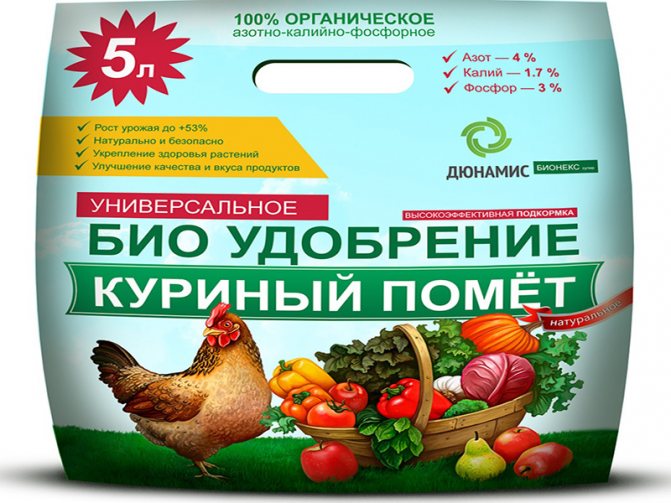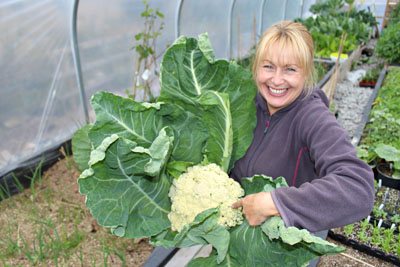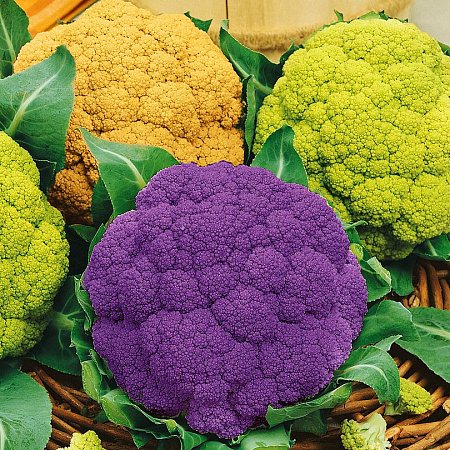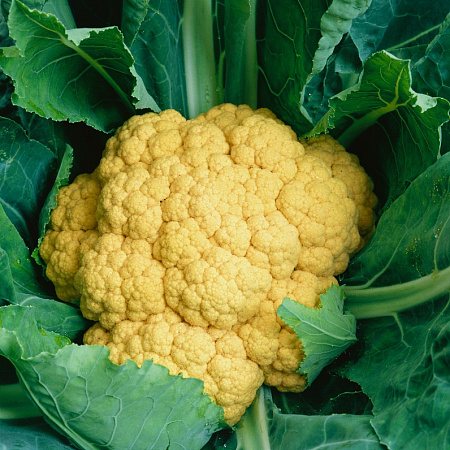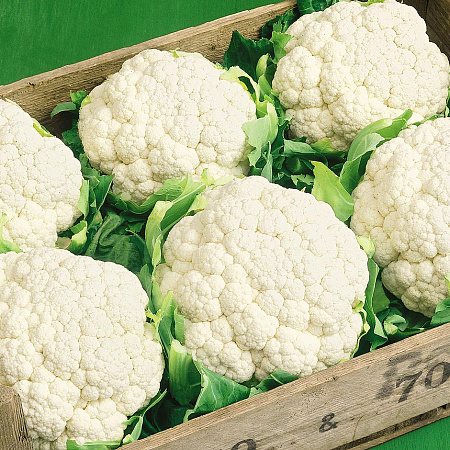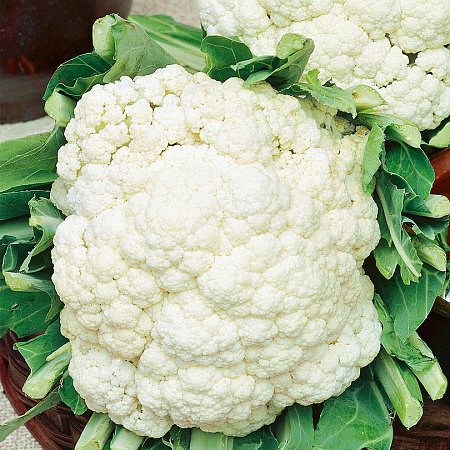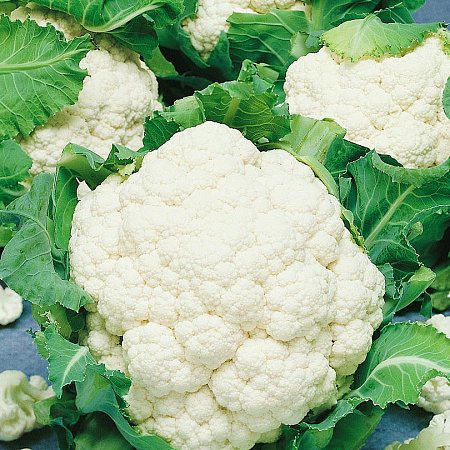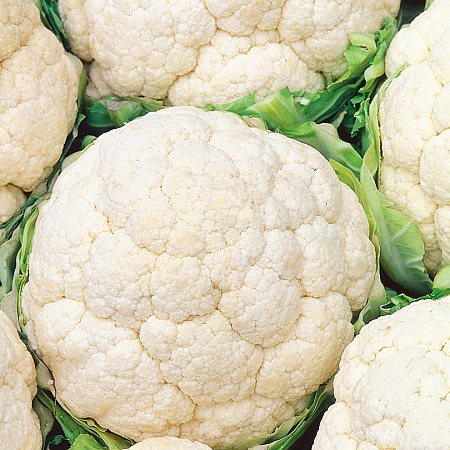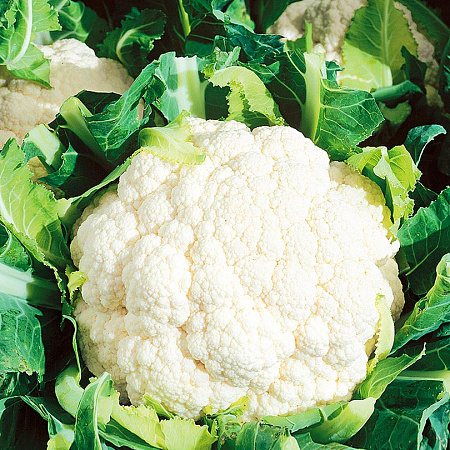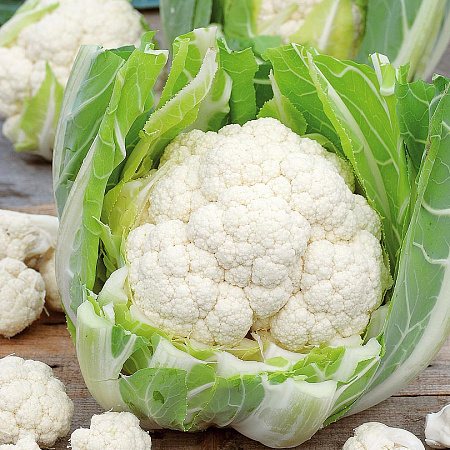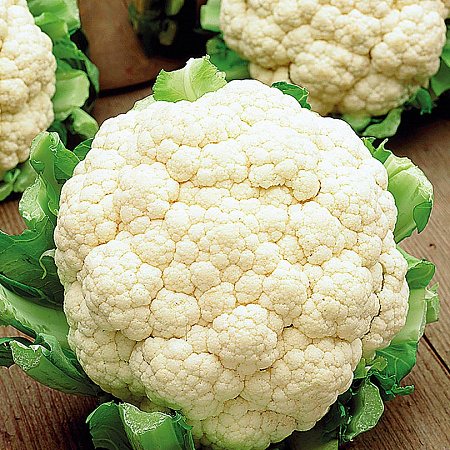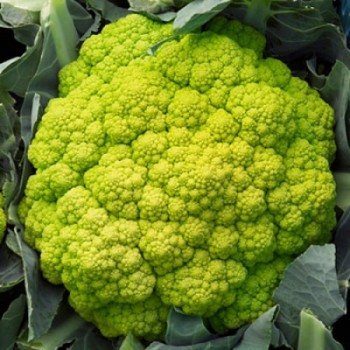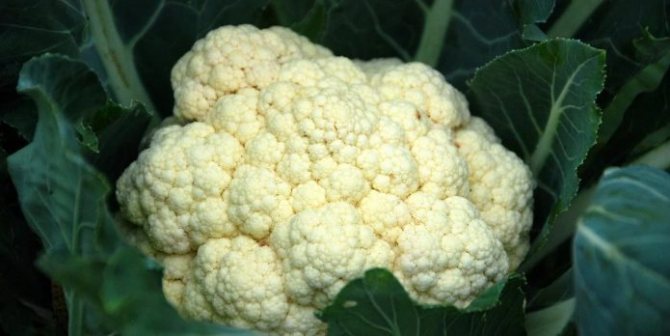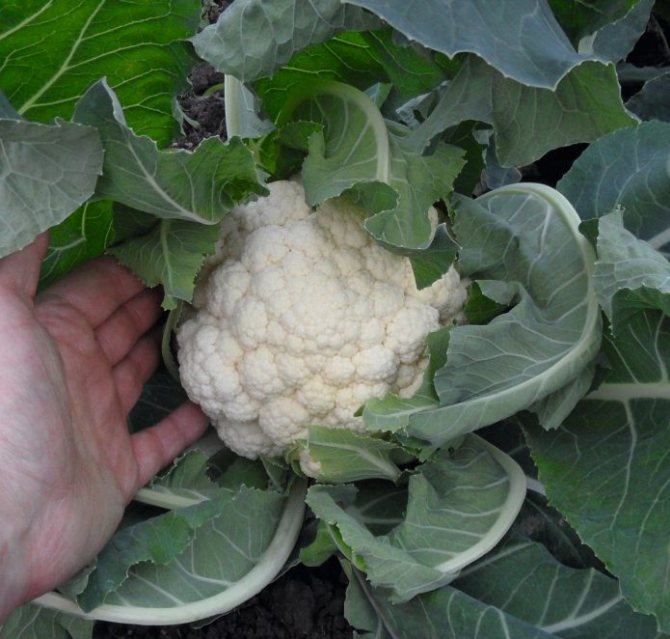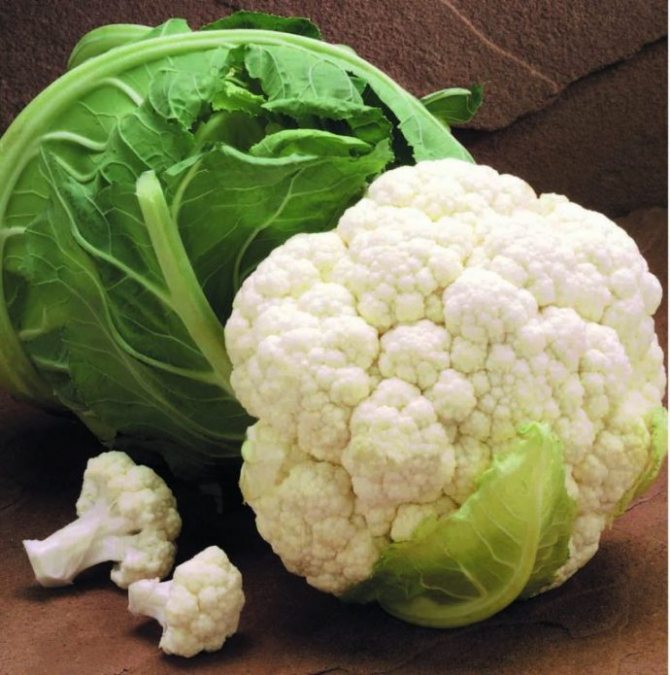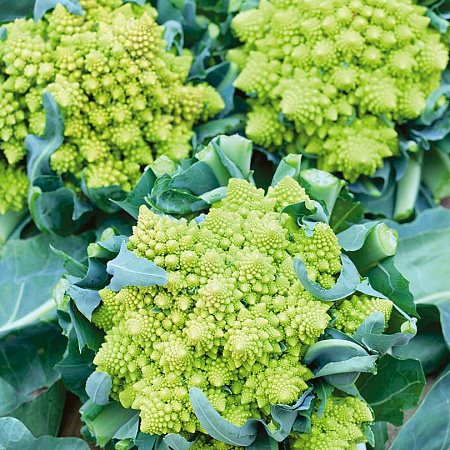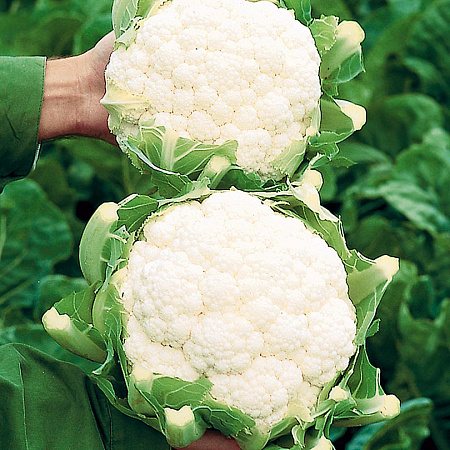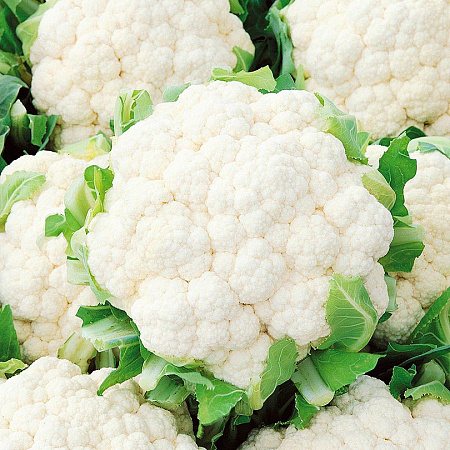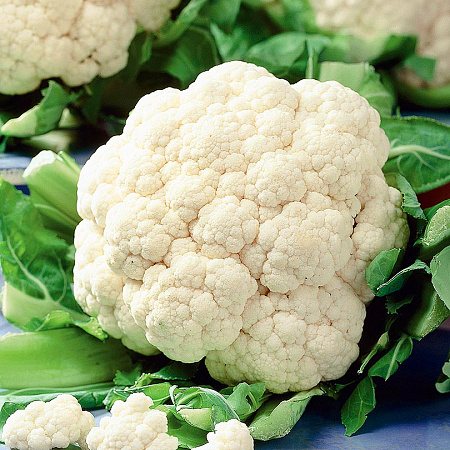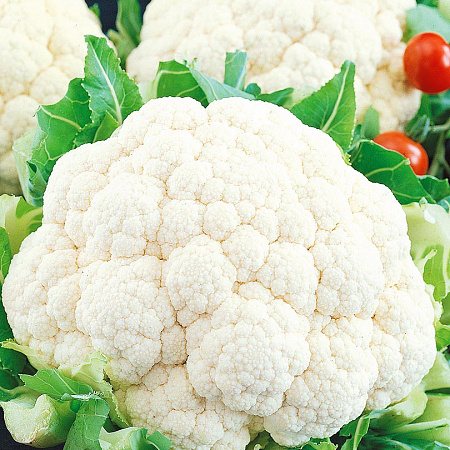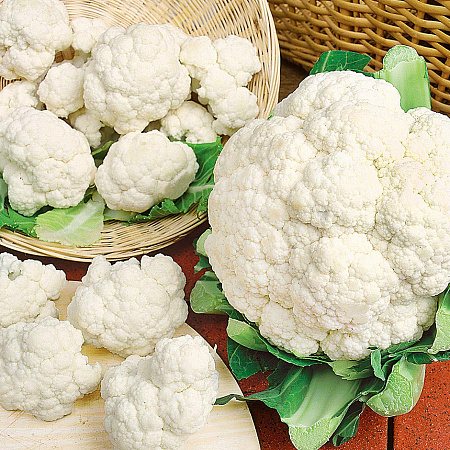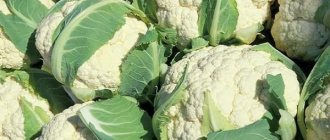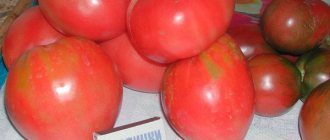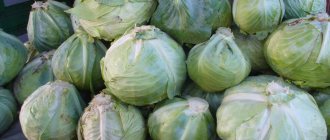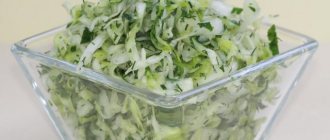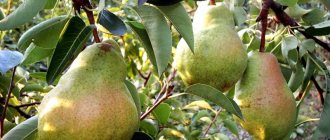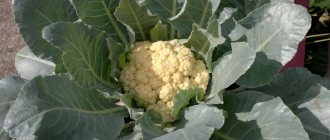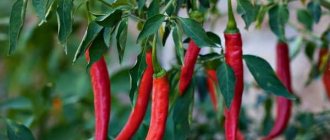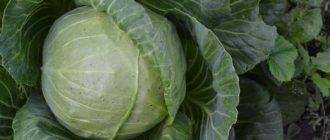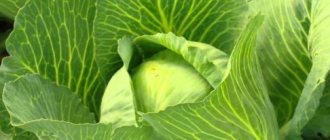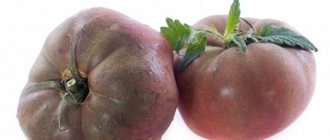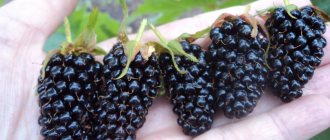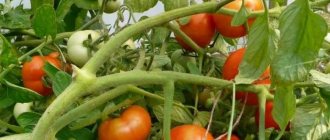for the Urals and Siberia
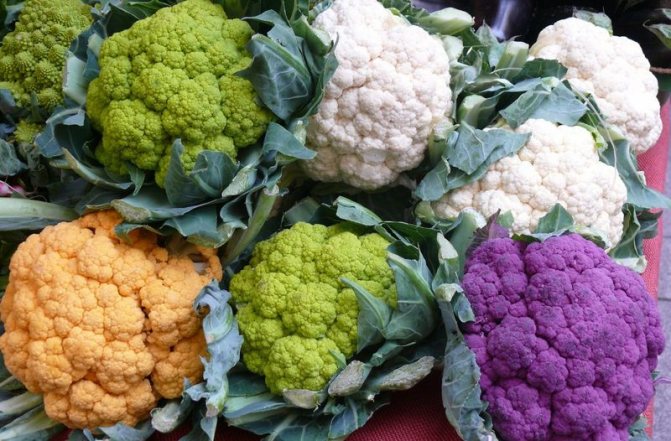
Cauliflower is one of the best in the large Cruciferous family. It contains more vitamins and vitamins (in particular, protein and ascorbic acid) than its white-headed relative. Cauliflower retains nutrients better than the more tender broccoli. It is recommended to include dishes from this type of cabbage in children's and dietary rations. Despite all the advantages, cauliflower occupies a very modest place in our garden plots. This is primarily due to some difficulties in growing crops in the harsh conditions of the Urals and Siberia. In the northern regions, only early cauliflower can be cultivated outdoors.
| ARTICLE IN THE TOPIC: Growing cabbage outdoors |
Cauliflower has a powerful rod-shaped stem, the length of which reaches 70 cm. The leaf plates are located perpendicular to it or slightly upward. The shape of the bluish-green leaves (lanceolate, oval, feathery) and the size of the petioles (from 5 to 40 cm) depend on the variety. By the time of ripening, a head of undeveloped peduncles is formed at the top of the stem, it is this part that is eaten. Its color can be snow white, cream, yellowish, green or beetroot pink. If the crop is not cut, a flower panicle will rise above the head. From small yellow flowers, after pollination, leguminous fruits are formed, characteristic of all cruciferous plants. Each pod contains up to 10 ball-shaped seeds. The roots of cauliflower are located at the surface of the earth, they are weaker and more sensitive than that of white cabbage. Therefore, the culture is more whimsical about the composition of the soil, watering and temperature extremes.
CONTENT:
- Early varieties of cauliflower
- Mid-season cauliflower varieties
- Late varieties of cauliflower
SEE ALSO:
- White cabbage varieties
- Broccoli variety
- Peking cabbage varieties
- Brussels sprouts varieties
[/ td]
|
Before choosing cauliflower varieties for cultivation in your garden, you need to decide on the priorities that you want to get in the end - an early harvest or an unrivaled taste, weather-resistant plants or fruits saturated with useful micronutrients.
The ripening period for cauliflower can be from 50 to 200 days. Also of great importance is the resistance of cabbage to various diseases and temperature extremes. Older varieties, as a rule, cannot boast of such characteristics. But recently bred hybrids have higher immunity.
Features of further care
After transplanting, cabbage should be watered regularly. After 2 weeks, hilling should be done, and after another 7 days, top dressing should be applied for the first time. Other care features are shown in the table below.
Table. How to care for your culture
| Condition | Short description |
| You need to water abundantly, but you should not overdo it. At first, seedlings need to be watered twice a week (6-8 l / m²). After a few weeks, the consumption can be increased to 9-10 liters. |
| There are many pests that can infect cauliflower, and it is extremely difficult to fight them.Therefore, for preventive purposes, it is recommended to shower the plants with tobacco or ash, or, as an option, spray it with burdock infusion or tomato stems. |
| We figured out the feeding before planting, so we note that in the future you need to periodically water the plants with a solution of chicken manure or mullein. Some varieties require mineral fertilizers. |
| The optimum temperature for culture development is 16-25 ° C. Exceeding this indicator will lead to a deterioration in yield. |
As a result, we note that if you followed all the recommendations given, but the cauliflower still did not give the desired result, then all that remains is to reduce the planting density.
Early varieties of cauliflower
Early varieties of cauliflower can be grown even in very cold regions - as the short growing season allows harvesting well before the fall frost. Early varieties need no more than 90 days from sowing seeds to forming a full-fledged head.
White castle | |
| Early maturing and fruitful variety. Sowing for growing seedlings is carried out in early March. The heads of this cabbage are large, dense, white, with a maximum weight of 1.5 kg. You can store it for up to 70 days. The variety is resistant to major diseases. | |
Goat Dereza | |
| This is one of the most famous varieties of Russian selection. They begin to harvest it on the 50-70th day after germination. The vertical rosette consists of gray-green, slightly bubbly leaves, partially covering the inflorescences. The heads are round, dense, white. The taste is good. The average weight of heads of cabbage is 600–800 g, but under favorable conditions it can increase to 2.5 kg. The yield of the variety is 3.2 kg / m2. It is characterized by amicable ripening, which allows you to collect most of the heads in one go. The variety easily tolerates short-term temperature drops down to -5oC. Rarely affected by diseases typical of members of the cruciferous family. | |
Snowdrift | |
| This variety has a medium early ripening period - it takes about 90 days to form a round, dense head. Fruit weight - 500-1200 g. Bluish leaves cover it. | |
Freedom F1 | |
| The ripening period of the variety is 70 days (when grown through seedlings). The variety is not afraid of drought, forms very large heads (in favorable conditions - up to 5 kg). | |
Movir 74 | |
| This is one of the most tested early varieties of Russian bred cauliflower. From the appearance of the first leaves to full ripeness, it usually takes about 2 months. In a southern climate, some gardeners harvest two crops of Movir 74. For full development they need space, so they plant seedlings using a 50 x 30 cm scheme. The white or yellowish heads of this cabbage weigh 0.5-1.3 kg each. They are dense and taste good. About 3 kg of cabbage is harvested from each square meter under good conditions. This variety tolerates heat and coolness patiently, loves abundant watering, but can be susceptible to bacteriosis. | |
Movir 2009 | |
| The namesake of the Soviet variety was bred and patented by the staff of the All-Russian Institute of Selection and Technology of Horticulture quite recently. Movir 2009 is also distinguished by its early ripening. But his “heads of cabbage” are slightly larger than those of their predecessor. The average weight is 0.9 kg, and the yield is up to 3 kg per square meter. The white cabbage head is slightly covered with gray-green leaves. The pulp is tender and tasty. The variety is recommended for growing in personal plots and dachas. The new hybrid is more resistant to disease than Movir 74. | |
Alpha | |
| This is a relatively new variety of cauliflower, developed by the joint efforts of specialists from agro and the All-Russian Research Institute of Vegetable Growing. It is perfect for growing in the Moscow region and more northern regions. From germination to harvesting, no more than 90 days pass. Large heads are snow-white, slightly flattened, weighing more than 1 kg. The pulp is firm, with a pleasant taste. It is possible to harvest up to 3.5 kg of the crop from one square meter. Alpha cabbage rarely gets sick.It is great for canning, freezing and fresh consumption. | |
Vinson | |
| A hybrid from Holland has settled well on Russian soil. Vinson will delight you with tasty and large heads for early cabbage, their average weight is 2 kg. Thanks to this, the yield of the variety is also higher than average, about 6 kg / sq.m. Snow-white cabbage heads ripen in about 2 months. The variety provides not the most significant, but stable yield, moreover, it is resistant to the main cabbage diseases. | |
Snowball 123 | |
| This hybrid belongs to the mid-early. Cabbage heads ripen up to 90-100 days. They should be bright white, round and firm by the time they are harvested. Average weight 1 kg. The taste is great. | |
Mellieha F1 | |
| Very showy hydride with purple inflorescences and light green leaves. The head of cabbage is dense, weighty. Inflorescences of excellent delicate taste, with a reduced sugar content and increased ascorbic acid. They can be boiled or fried, and when steamed, the color of the heads is preserved. A hybrid for open ground or film greenhouses, grown both through seedlings and by sowing seeds directly into the ground. Plants are hygrophilous, demanding on soil fertility. Ripening period - 75-80 days. Average weight - 1.3 kg. |
Tulum F1 | |
| Dense, rounded inflorescence heads of a pleasant creamy color, surrounded by dark green leaves with a waxy bloom. The taste is very good, delicate, dietary. A multi-purpose hybrid suitable for any kind of cooking, canning or freezing. Grown in open ground and greenhouses through seedlings or sowing seeds in the ground. Ripening period - 75-80 days. Average weight - 1.3 kg. |
Anfisa F1 | |
| A hybrid of the earliest ripening period, ready for harvesting 75 days after transplanting. The heads are dense, rounded, snow-white, with an average weight of 1.8 kg. Productivity - 5.9 kg / sq.m. |
Belcourt F1 | |
| An exquisite aristocrat hybrid. It ripens early, warms the soul with a magnificent evenness, an impeccable rounded-flat shape of small-knobby, rather well-nourished two-kilogram heads, endlessly pleases with excellent taste. Ripening period - 65-70 days. The average weight is 2 kg. |
Brunel F1 | |
| The variety successfully combines early maturity and excellent harvest quality. Ready for harvesting in 55-60 days after transplanting. Tolerant to unfavorable spring weather with its temperature fluctuations from hot to cold, it prefers well-drained and quickly warmed up soils. |
Bruce F1 | |
| It amazes with its rapid maturity and absolute unpretentiousness. Resistant to stress, lack of heat and mineral nutrition. The heads are white, strong, aligned, with good self-covering. Ripening period - 55-60 days. The average weight is 1.5 kg. |
Kashmir F1 | |
| From planting seedlings to it takes 70-75 days. It is characterized not only by good yield, but also by very high marketability. The heads are dense, durable, reliably protected by covering leaves, excellently transported. The average weight is 2 kg. The yield of the variety is 5-7 kg / sq.m. |
Brazil F1 | |
| Highly productive hybrid for early production. The period from planting seedlings to harvesting is 70-75 days. The plant is strong, with a strong root system, allowing for stable yields on different types of soil. The inflorescence is smooth, well closed from below, protected from direct sunlight by numerous large leaves. Ripening period - 70-75 days. The average weight is 2 kg. The yield of the variety is 4.3 kg / sq.m. |
Lecanu F1 | |
| New generation hybrid with high vigor and intensive development. It grows "by leaps and bounds." It is characterized by a very high leveling and marketability of products. The heads are well protected by leaves from direct sunlight, very dense, dazzling white. Ripening period - 70-75 days. Average weight - 2.5 kg. The yield of the variety is 3.7 kg / sq.m. |
Space Star F1 | |
| It has perfectly established itself as one of the most reliable early-maturing hybrids, time-tested. The plant is vigorous, with a well-developed root system. Forms a high yield with excellent commercial qualities 70-75 days after transplanting. Stress-resistant, easily adapts to weather disasters. The heads are flawlessly aligned, firm, large, and white as whipped cream. Average weight - 2.2 kg. The yield of the variety is 3-5 kg / sq.m. |
Vitaverde F1 | |
| An amazing hybrid with a green head. One of the first in a friendly company of multi-colored hybrids. The head is dense, delicate texture, excellent taste. Differs in high nutritional value due to the increased content of carotene, essential amino acids and vitamins. Ripening period - 70-80 days. Average weight - 1.3 kg. The yield of the variety is 3.4 kg / sq.m. |
Goodman
Like many modern Dutch hybrids, this variety attracts with high yields in a short growing season - 65-80 days. But this is only on condition that the gardener will regularly water, feed the plant, not forgetting about tillage.
The average weight of the head is 1.2-1.5 kilograms. Cabbage is snow-white with elastic and dense forks that can be frozen, while after defrosting, the vegetable does not lose its color and taste. Goodman has a strong root system, tolerates temperature extremes and unfavorable weather. This variety is resistant even to extreme heat.
The heads are rounded, the inflorescences are dense and firm, completely covered with leaves. Agrarians highly appreciate this type of culture, as it is resistant to fungal diseases. The heads are resistant to yellowing. The vegetable easily withstands transportation, while it is distinguished by the high quality of the heads and their excellent external neatness.
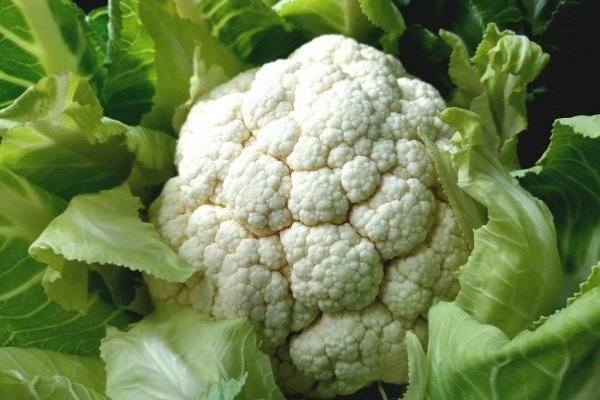

Mid-season cauliflower varieties
The medium-ripening cauliflower is harvested about 3 months after germination. For the growth and formation of full-fledged heads, these varieties require not only time, but also a sufficiently high temperature, at least + 20 ° C. The colder the summer, the worse the cabbage will grow. Therefore, in the cold regions of the Urals and Siberia, mid-season varieties are best grown in greenhouse conditions. The advantage of these varieties is a longer storage period than the earlier ones. In addition, it is among the cabbage of the middle ripening period that there is truly cauliflower: purple and emerald.
Flora Bianca | |
| This variety forms a yellowish dense head weighing about 1200 g. The rosette of leaves is slightly raised. Taste characteristics are excellent, the purpose is universal. Ripening period - more than 110 days. | |
Parisian | |
| This variety is resistant to diseases and low temperatures, reaching maturity at 110–120 days after germination. Forms dense, round-flat, milky heads, which are partially covered with light green leaves. Average weight - 750 g. Parisian woman has excellent taste, which is preserved when freezing and canning. Average yield - 2.5 kg / m2. This cabbage is perfect for fresh consumption, processing and freezing. | |
Patriotic | |
| Average ripening period (from 100 to 120 days). White color. Weight reaches 800 grams. Recommended for dietary meals. | |
Summer resident | |
| The main advantage of this variety is its extended ripening. Harvesting can take place all summer and autumn, it is convenient: it does not have to be stored for a long time. The heads can be of different colors: white, cream or beige. Weight ranges from 600 g to 1 kg. The yield is usually 3 kg per meter. The variety tolerates temperature drops and high humidity well. The plant is not susceptible to disease. | |
Snowball | |
| For 115–120 days, cabbage forms an elastic, rather large head (average weight 1 kg). Its flesh is firm, pleasant to the taste. The Snow Globe variety safely tolerates a cold snap in autumn. Therefore, there is no need to rush to harvest. | |
Purple | |
| This Russian cabbage variety is not only tasty, but also very decorative. It forms massive (1.5 kg) purple heads. The yield is 4 kg / sq.m. But in the northern regions, the Purple variety may need shelter. | |
Veronica F1 | |
| Very interesting and attractive representative of the Romanesco cultivar (with bare head), obtained by crossing cauliflower and broccoli. In a raised rosette of ash-green, with a waxy coating of wavy, slightly bubbly leaves, like a pearl, there is a very expressive and beautiful pyramidal medium-knobby dense golden-greenish head. The taste is excellent. Ripening period - 85-90 days. The average weight is 1.5 kg. The yield of the variety is 4.2 kg / sq.m. |
Daria F1 | |
| Mid-season hybrid. In late July and early August, you get a wonderful harvest. The heads are very even, large and beautiful. Ripening period - 85 days. The average weight is 1.6 kg. The yield of the variety is 3 kg / sq.m. |
Purple ball | |
| A new variety of healthy vibrant cauliflower. For 120 days, the plant forms edible lilac balls with a small hilly structure, which are framed by bluish-green leaves. The weight of each reaches 900 g. And from each square meter it is possible to harvest about 3 kg. | |
Fortaleza F1 | |
| An excellent mid-season hybrid. The heads are aligned, dense, boiling white, rather large, with a delicate texture, excellent taste. Easily breaks up into inflorescences. Ripening period - 85 days. Average weight - 1.3 kg. The yield of the variety is 3-4.9 kg / sq.m. |
Amsterdam F1 | |
| An excellent mid-late hybrid with good yield and high marketability. It ripens in early autumn. Inflorescences are milky white, dense, regular rounded shape, well protected by covering leaves from light. The heads are aligned. Ripening period - 85-90 days. Average weight - 2.5 kg. The yield of the variety is 5.5 kg / sq.m. |
Cabral F1 | |
| A wonderful mid-season hybrid-strong man confidently replaces early varieties, keeps the brand of high marketability and excellent taste, although it is slightly inferior in yield (4.5 kg / m²), while remaining reliable, persistent and resistant to any weather disasters. The heads are aligned, elliptical, tuberous, weighing up to 3 kg. Ripening period - 80 days. The yield of the variety is 4.5 kg / sq.m. |
Goat Dereza
This is a medium ripeness variety. Differs in compactness and white head, prevailing yellowish and sometimes reddish tint. An upright plant bears fruits, the average weight of which is 800 grams, and with proper care it can exceed 2 kilograms.
The growing season of the plant is 53-70 days. Seedlings sprout well and develop amicably. Shoots can be planted from the second half of April to mid-July. When planted, there are 4 plants per 1 square meter. This variety of cabbage is very picky about the composition of the soil. When planting, it is important not to forget about fertilizers and top dressing.
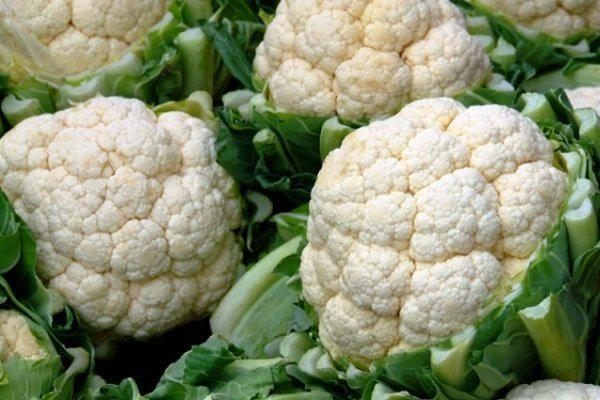

Late varieties of cauliflower
Late varieties of cauliflower in the Urals and Siberia can only be grown in greenhouses. It takes 3-4 months to ripen. But the long wait will not be in vain. The harvest most often grows weighty. Each cabbage head pulls one and a half to two kilograms. In addition, they are stored longer for both early and mid-season varieties.
Cortez F1 | |
| A hybrid of Dutch origin was acclimatized in Russia. This variety is recommended to grow to summer residents and farmers. It provides a stable yield, and cabbage heads are often larger than average, up to 2 kg and larger. The more fertile the soil, the more significant the harvest will be. Heads of cabbage keep well. Their white dense flesh remains tasty after freezing. The variety is demanding on the quality of the soil. In areas with poor soil, it is not possible to grow a decent crop if fertilization is not applied. | |
Amerigo F1 | |
| A variety of cauliflower from Holland.It has been grown in Russian gardens for almost 20 years. The experts gave the highest rating to the taste of Amerigo. In addition, its sugar-white heads grow to a considerable size. The average weight is one and a half kilograms, and the maximum weight is up to 2.5 kg. From one square meter it is possible to harvest up to 5 kg of Amerigo cauliflower crop. Moreover, there is no need to rush to harvest, this variety tolerates a drop in temperature well. | |
Regent | |
| The growing season is up to 90 days. Head weight within 500-800 grams. Tasty enough and also recommended for dietary consumption. | |
Green snowdrift | |
| This variety appeared in the State Register only in 2020. It has not yet gained great popularity, but it is worth paying attention to those who love beautiful vegetables. This variety has a pale green head framed and slightly covered with darker leaves. The yield is low (just over 2 kg / sq.m), but the taste of the cabbage is exquisite, and the properties are dietary. | |
Clara's corals | |
| The variety was bred relatively recently. This is a late cabbage with miniature (their weight is only 250 g) heads of a bright purple-burgundy color, surrounded by light green leaves. That is, Clara's Corals are an edible flower. The taste, according to experts, is excellent. | |
Late Pearl F1 | |
| This late-ripening hybrid produces large, even heads. At low temperatures it can be stored for up to 30 days. Individual segments of the head of cabbage look great in pickles. Ripening period - 100 days. Average weight - 1.8 kg. The yield of the variety is 3 kg / sq.m. |
Summer resident
Early variety cauliflower. The advantage of the vegetable is a long fruiting period. The ripening period occurs 80-100 days after transferring the seedlings to the garden. The vegetable is characterized by a white, rounded head with a slight flattening. The average weight of a vegetable is up to 1 kilogram.
The product contains a lot of ascorbic acid and sugar, which gives extraordinary taste notes. The leaves reliably protect the ripening head from the merciless rays of the sun, so the gardener gets clean fruits without defects. Cabbage Summer resident usually produces small fruits. When planting, it is important to adhere to the system: plant 3-5 seedlings per 1 square meter at a distance of 50 centimeters between the bushes.
Planting should be done in late May and early June. The vegetable perfectly tolerates transportation, retains its useful properties for a long time if it is stored correctly.
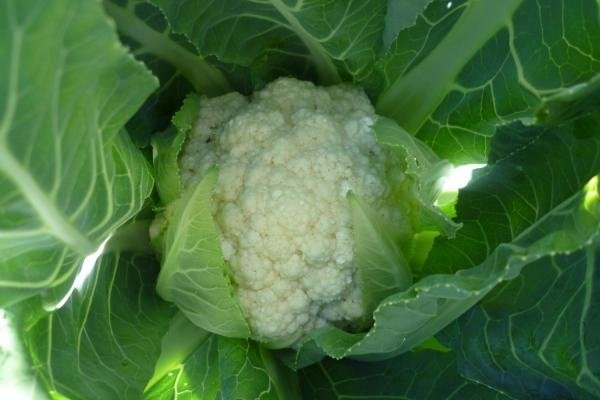

Where to Buy Cauliflower Seeds
The Scientific and Production Association "Sady Rossii" has been introducing the latest achievements in the selection of vegetable, fruit, berry and ornamental crops into the wide practice of amateur gardening for 30 years. In the work of the association, the most modern technologies are used, a unique laboratory for microclonal reproduction of plants has been created. The main tasks of NPO Sady Rossii is to provide gardeners with high-quality planting material for popular varieties of various garden plants and novelties of world selection. Delivery of planting material (seeds, onions, seedlings) is carried out by Russian post. We are waiting for you for shopping: NGO "Gardens of Russia"
Flora blanca
A mid-ripening variety of cauliflower, dominated by round-flattened inflorescences of white with a cream shade. The growing season is 109-112 days. The average weight of one head is 1.2 kilograms.
The fruits are densely covered with leaves, so the heads are reliably protected from the scorching sun rays, which may cause black spots and bitterness in the taste. Seedlings and ripening are friendly, which means that the harvest will be almost simultaneous.
A distance of 50 centimeters and 70 centimeters is observed between bushes and aisles. Cabbage is distinguished by its increased resistance to bacteriosis and cold weather; it does not lose its taste for a long time, provided it is stored correctly.
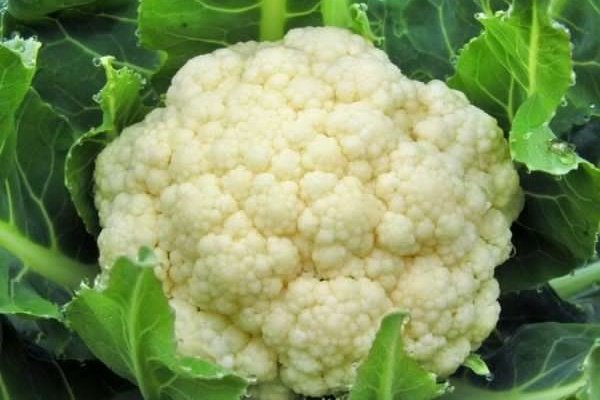

White beauty
Round inflorescences attract gardeners.Mid-season cauliflower is a high-yielding species. Due to the large head, the weight of the cabbage varies from 0.8 to 1.2 kilograms. The growing season lasts 55-65 days after planting seedlings on an open bed.
The peculiarity of the culture is the inability to cope with temperature extremes and pests, therefore, it is required not only to cover the transferred seedlings with a dense film, but also to regularly carry out preventive treatments against parasites. Cabbage retains its dense structure and transport properties well. Even freezing will not spoil the appearance of White Beauty cabbage.
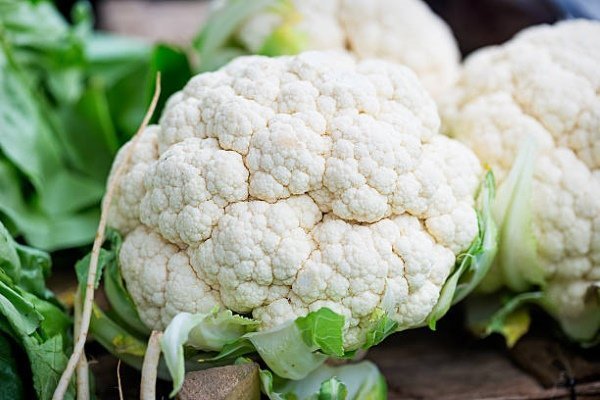

Amerigo
Variety Amerigo is a late-ripening vegetable. The growing season lasts 74-80 days. The white heads of cabbage are round and massive. The weight of one copy can be 2-2.5 kilograms. Unlike other varieties, this variety is highly resistant to pests and viral diseases. The advantage of Amerigo is its increased resistance to cold; cabbage does not spoil not only its appearance, but also its taste.
Due to its intensive growth, cauliflower needs regular feeding. Large leaves reliably protect the heads from the scorching sun rays, creating shading. From the second half of May to early June, you can plant seedlings. The distance between bushes and rows should be 70-80 centimeters.
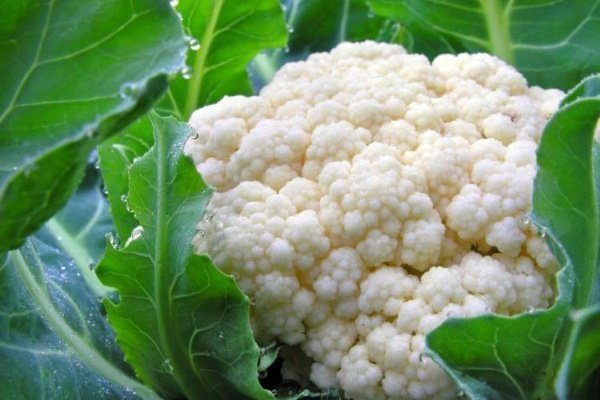

When planting cauliflower, you need to pay a lot of attention to the vegetable. Only in this case, the gardener will have a high yield, healthy fruits and the absence of defects on the heads. It is imperative to observe the conditions for caring for the plant: water, fertilize, treat against diseases and pests.
0

